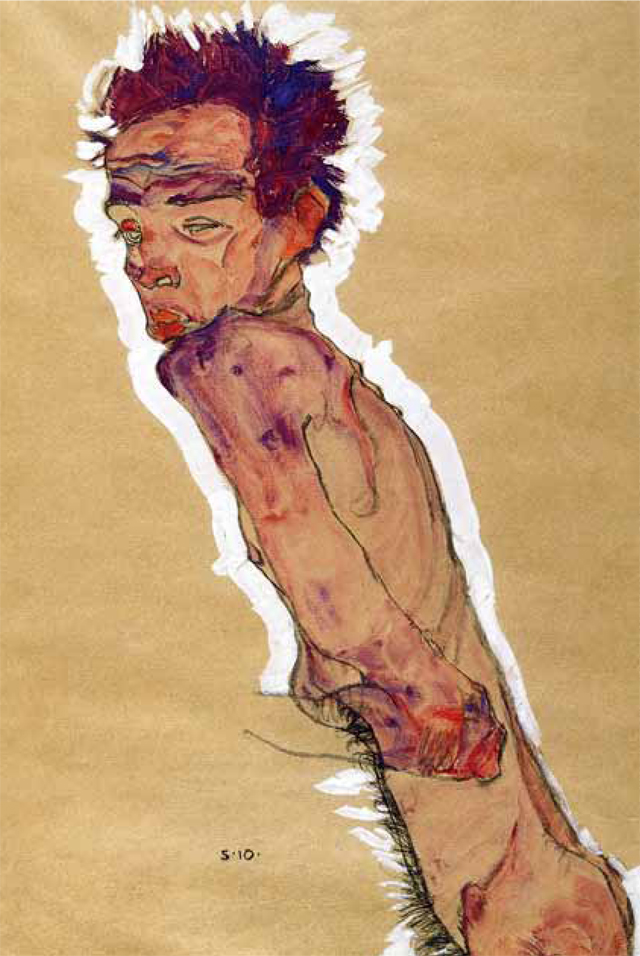My Favourite Painting: John Taylor
John Taylor chooses his favourite painting for Country Life.


Nude Self Portrait, 1910, by Egon Schiele (1890–1918), 17in by 103/4in, Albertina, Vienna, Austria. Bridgeman Images.
John Taylor says: 'I first saw Schiele’s work at the Neue Galerie on the Upper East Side of Manhattan, together with work by his friend and mentor Gustav Klimt. There’s no compromise in Schiele, no pandering to the public taste. “Here I am,” he seems to say. “Take me or leave me.” My creative awakening as a musician took place in Birmingham in the late 1970s, where I was witness to the phenomenal power of the English punk-rock revolution. I saw the same dark power in Schiele. What angst! I see Schiele as the artist who introduced us to 20th-century man: complex and full of energy and ideas, not all of them wholesome.'
The musician and songwriter John Taylor is best known as the bass-guitarist of Duran Duran.
John McEwen comments: 'To be an engine driver is probably no longer every boy’s dream as it was in Egon Schiele’s childhood. He never wanted to be one, although he could hardly have had more inducement. A grandfather had been an important railway builder. His father was a stationmaster at Tulln, on a mainline near Vienna. His uncle, also his godfather and, later, his guardian, was a railway engineer. His elder sister worked for the railways and married a railway executive.
Schiele’s earliest surviving drawings, dating from when he was seven, are of trains. They show a remarkably precocious eye for accuracy and detail. But it was drawing, rather than the railway, that was his obsession from even before his second birthday. The art critic Arthur Roessler, his friend, mentor and biographer, wrote: ‘The feeling of loneliness, for him a loneliness that was totally chilling, was in him from childhood onwards.’
At 15, this chilling isolation was compounded by the premature death of his father. Schiele was devastated: ‘I don’t know whether there’s anyone at all who remembers my noble father with such sadness. I don’t know who is able to understand why I visit those places where my father used to be and where I can feel the pain.’ He resented his mother for what he considered her neglect of his father’s memory. As that rare English historian of Teutonic art Frank Whitford, who died recently, wrote in a later biography (Thames & Hudson, 1981), in Schiele’s often harrowing portraits ‘we are never allowed to forget… the skeleton beneath’.
‘Egon Schiele: The Radical Nude’ is at The Courtauld Gallery, London WC2, from October 23 to January 18, 2015 (020–7848 2526; www.courtauld.ac.uk)
Sign up for the Country Life Newsletter
Exquisite houses, the beauty of Nature, and how to get the most from your life, straight to your inbox.
THis article was first published in Country Life, July 9, 2014
Country Life is unlike any other magazine: the only glossy weekly on the newsstand and the only magazine that has been guest-edited by HRH The King not once, but twice. It is a celebration of modern rural life and all its diverse joys and pleasures — that was first published in Queen Victoria's Diamond Jubilee year. Our eclectic mixture of witty and informative content — from the most up-to-date property news and commentary and a coveted glimpse inside some of the UK's best houses and gardens, to gardening, the arts and interior design, written by experts in their field — still cannot be found in print or online, anywhere else.
-
 'Monolithic, multi-layered and quite, quite magnificent. This was love at first bite': Tom Parker Bowles on his lifelong love affair with lasagne
'Monolithic, multi-layered and quite, quite magnificent. This was love at first bite': Tom Parker Bowles on his lifelong love affair with lasagneAn upwardly mobile spaghetti Bolognese, lasagne al forno, with oozing béchamel and layered meaty magnificence, is a bona fide comfort classic, declares Tom Parker Bowles.
By Tom Parker Bowles
-
 Country houses, cream teas and Baywatch: Country Life Quiz of the Day, April 24, 2025
Country houses, cream teas and Baywatch: Country Life Quiz of the Day, April 24, 2025Thursday's Quiz of the Day asks exactly how popular Baywatch became.
By Toby Keel
-
 My favourite painting: Allan Mallinson
My favourite painting: Allan MallinsonMilitary historian Allan Mallinson picks an image of 'faith, generosity and ultimate sacrifice'.
By Charlotte Mullins
-
 My Favourite Painting: Piet Oudolf
My Favourite Painting: Piet Oudolf'One cannot sense whether he is far out on the ocean or closer to shore, or what he may be watching or feeling in that moment as he stares towards the beach.’
By Country Life
-
 My Favourite Painting: Mary Plazas
My Favourite Painting: Mary Plazas'There is compassion, awe, humility, a knowing yet a questioning in the glistening eyes. It moves me, it inspires me beyond the need to know.’
By Country Life
-
 My favourite painting: Robert Kime
My favourite painting: Robert KimeRobert Kime shares his fondness for New Year Snow by Ravilious
By Country Life
-
 My Favourite Painting: Anna Pavord
My Favourite Painting: Anna PavordAnna Pavord chooses a picture which reminds her of where she grew up
By Country Life
-
 My favourite painting: The Duchess of Wellington
My favourite painting: The Duchess of WellingtonThe Duchess of Wellington chooses her favourite painting for Country Life.
By Country Life
-
 My favourite painting: Maureen Lipman
My favourite painting: Maureen LipmanMaureen Lipman chooses her favourite painting for Country Life.
By Country Life
-
 My favourite painting: Jacqueline Wilson
My favourite painting: Jacqueline Wilson'I looked at this painting and decided to write about a Victorian circus girl one day'
By Country Life